Many people lose about 100 hairs from their scalp every day. This can be due to age, genes, hormonal changes, health issues, poor diet, or stress. These factors can lead to thinning hair and even bald spots.
There are treatments to help with hair loss. These include medicines like minoxidil and finasteride, surgery, and low-level laser therapy (LLLT). LLLT is a non-invasive method that uses light to wake up hair follicles and help hair grow back.
Research shows that LLLT is safe and works well. A 2014 study found it helped both men and women with hair loss. Another study in 2013 showed that young men saw a 39% increase in hair growth after 16 weeks of treatment. Even though it’s expensive, LLLT is a good option for early-stage hair loss.
LLLT boosts the growth of hair by helping fibroblasts, which are key for hair growth. The right amount of light is important for the best results. The HairMax LaserComb, for example, helps increase hair growth and make hair stronger. Red LED light also releases growth factors that help hair grow back.
Key Takeaways
- Individuals lose about 100 hairs from their scalp daily.
- Studies confirm that low-level laser therapy (LLLT) is safe and effective for hair regrowth.
- Laser hair treatment can result in a 39% increase in hair growth over 16 weeks.
- Clinical laser treatments for hair loss can be costly but are promising for early-stage hair loss.
- Low-level laser therapy helps stimulate hair growth by proliferating fibroblasts.
Understanding Hair Loss: Causes and Concerns
Hair loss affects millions of people around the world. It can be upsetting, but knowing what causes it can help manage and treat it. Here are some main reasons why people lose hair.
Genetic Factors
Hereditary hair loss, or androgenic alopecia, affects about 50% of people. It’s mainly genetic and leads to thinning hair and baldness over time. If your family has a history of hair loss, you’re more likely to experience it too.
Hormonal Changes
Hormonal shifts during pregnancy, menopause, or from some medicines can affect hair growth. Conditions like polycystic ovary syndrome (PCOS) and thyroid issues also cause hair loss due to hormonal changes.
Medical Conditions
Some health issues, like thyroid problems, scalp infections, autoimmune diseases, and diabetes, can lead to hair loss. For example, alopecia areata, an autoimmune disease, causes patchy hair loss.
Poor Nutrition
Lacking essential nutrients like iron, protein, biotin, or zinc can harm hair health. This can lead to thinning and shedding. Eating a balanced diet is key to keeping hair healthy and preventing hair loss due to nutrition.
Effect of Stress
Severe stress, whether physical or emotional, can disrupt hair growth. This often leads to temporary hair loss, like telogen effluvium. This happens after a big shock or trauma.
Knowing what causes hair loss is the first step to finding effective treatments. There are many treatments out there, but tackling the root cause is key for the best outcomes.
What is Low Laser Hair Therapy?
Low Laser Hair Therapy (LLLT), also known as low-level laser therapy, is a new way to fight hair loss and help hair grow back. It uses special diodes that send out red light or infrared. This light helps wake up hair follicles, making them grow hair again. The best part is, it’s easy, clean, and doesn’t hurt.
The Theory Behind the Treatment
LLLT works by sending photons into scalp tissues. These photons are like tiny messengers that help blood flow better and wake up hair follicles. This leads to more hair growth. Studies show that 85% of people saw less hair loss, and 55% grew new hair.
Up to 70% of men and 40% of women suffer from hair loss. Men often see their hairline move back and lose hair on top. Women notice their hair getting thinner all over their scalp. The HairMax® LaserComb and the iRestore Hair Growth System are FDA-approved to help with these issues.
How Photons Stimulate Hair Follicles
When LLLT devices shine on the scalp, the photons go into weaker cells. They make these cells work better and produce more energy. This leads to healthier hair growth. Studies show that people using LLLT had more hair than those who didn’t.
Scalp treatment lasers work by making hair follicles respond better. They increase blood flow to the scalp, feeding the follicles and helping hair grow. To get the best results, you need to use it regularly, usually 2 to 3 times a week for 8 to 15 minutes.
Benefits of Low Laser Hair Therapy
Low Laser Hair Therapy (LLLT) is gaining popularity for its many advantages. It’s seen as a top choice for those wanting to restore their hair. The benefits make it stand out as a non-invasive and effective treatment.
Non-Invasive and Painless
LLLT is known for being non-invasive and pain-free. It doesn’t require surgery, making it great for those avoiding invasive treatments. Studies show it’s a safe way to treat hair loss, with little to no pain during the process.
The FDA approved it in 2007 for treating androgenetic alopecia (AGA). This approval confirms its safety.
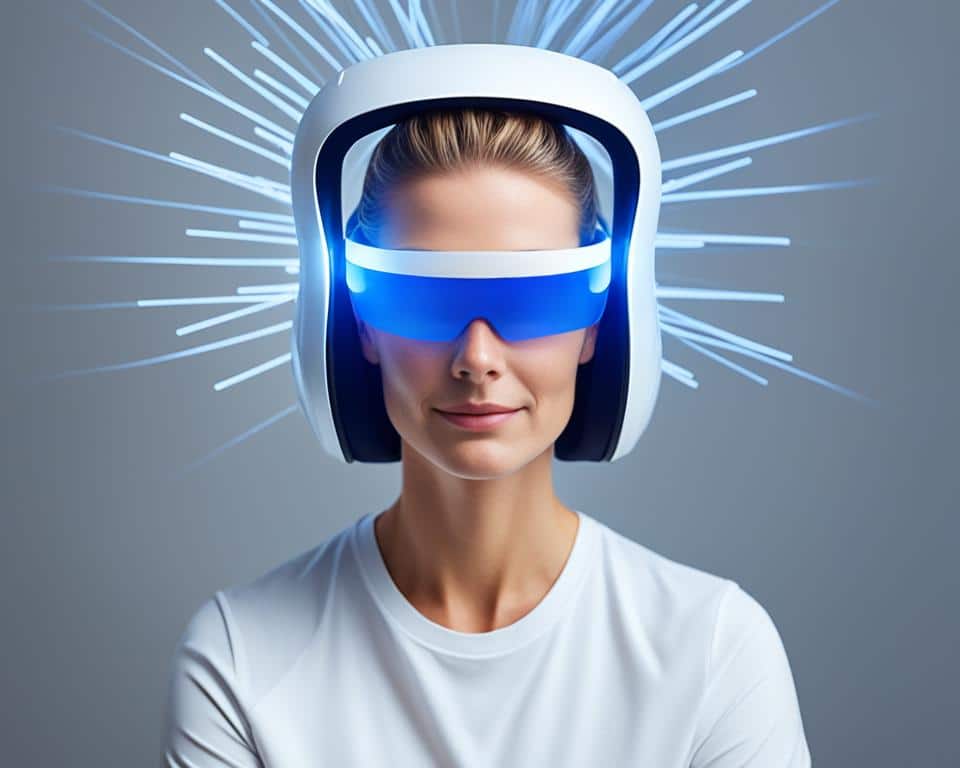
Increase in Hair Strength
LLLT also boosts hair strength and quality. It helps hair follicles work better and makes hair thicker and more resilient. In fact, 55% of patients saw new hair growth, showing its effectiveness.
Absence of Side Effects
LLLT has few side effects, making it a good choice for many. Some minor issues like temporary redness or itchiness might happen, but they’re usually short-lived. Wrong use of lasers can cause serious problems, but with care and expert advice, LLLT is safe.
Studies show it slows or stops hair loss in about 85% of patients. This makes LLLT a top choice for hair growth.
Limitations and Considerations of Low Laser Hair Therapy
Low-Level Laser Therapy (LLLT) can be a good option for hair growth. But, there are things to think about before starting. Knowing these can help you make a smart choice.
Time Commitment
LLLT needs you to commit time. You’ll need to have sessions often, for a few months. If you’re busy, this might be hard. But, the benefits over time are usually worth it.
Cost Factors
Thinking about the cost of LLLT is important. It can be pricey, needing a big budget. But, compare the cost to the possible gains and long-term effects. Many people find it worth the cost, thanks to its high success rate and safety in promoting hair growth.
Medication Interactions
It’s key to consider how LLLT might affect your medications. If you’re on certain drugs or have health issues, talk to your doctor first. This ensures the treatment is safe and works best for you.
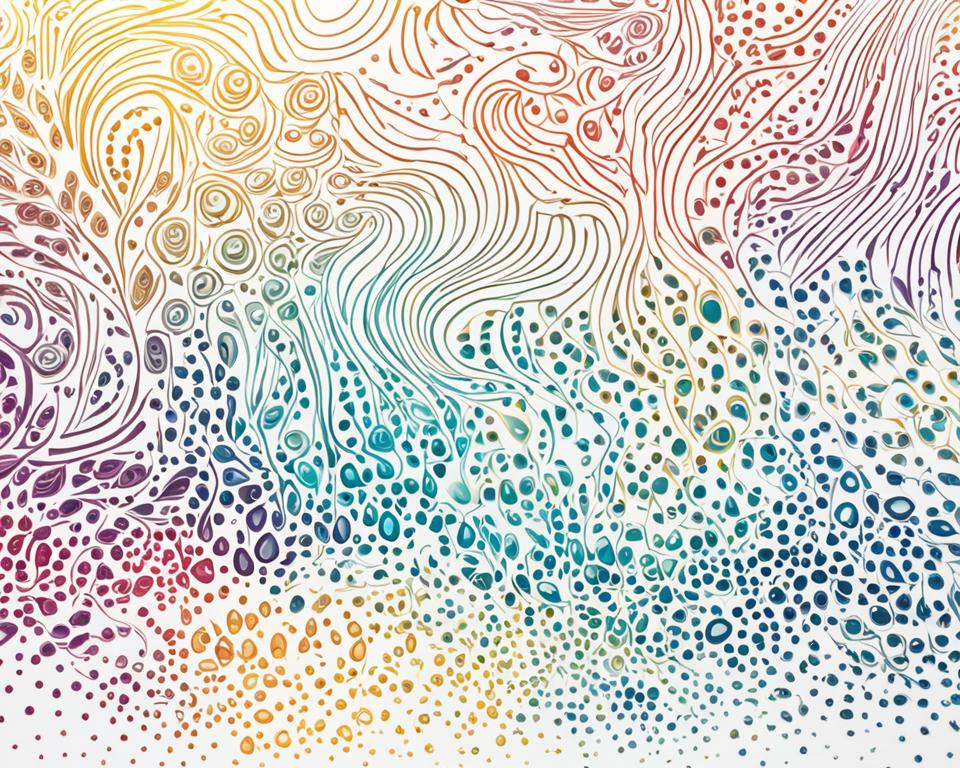
| Consideration | Description |
|---|---|
| Time Commitment | Multiple weekly sessions required over several months. |
| Cost Factors | High costs of clinical LLLT treatments. |
| Medication Interactions | Potential interactions with photosensitizing medications. |
Is Low Laser Hair Therapy Suitable for Everyone?
Low Laser Hair Therapy (LLLT) is a promising solution for many with hair loss. But, it’s key to check if it’s right for you. It’s FDA-approved for both men and women, especially for early to moderate hair loss. Studies show it helps 10 out of 11 clinical trials, leading to more hair growth.
But, how well it works can depend on your hair loss level and pattern. Advanced hair loss might not see big improvements. Your health, medicines, and lifestyle also affect how well it works. Some people might not see results after six months and may look for other treatments.
Being consistent with treatment is crucial. Most patients need 3-4 treatments a week, each lasting 15 to 20 minutes. You might need to treat for 6 to 12 months to see better hair density and thickness. Studies show it can increase hair growth by 39% in five months for men with androgenic alopecia.
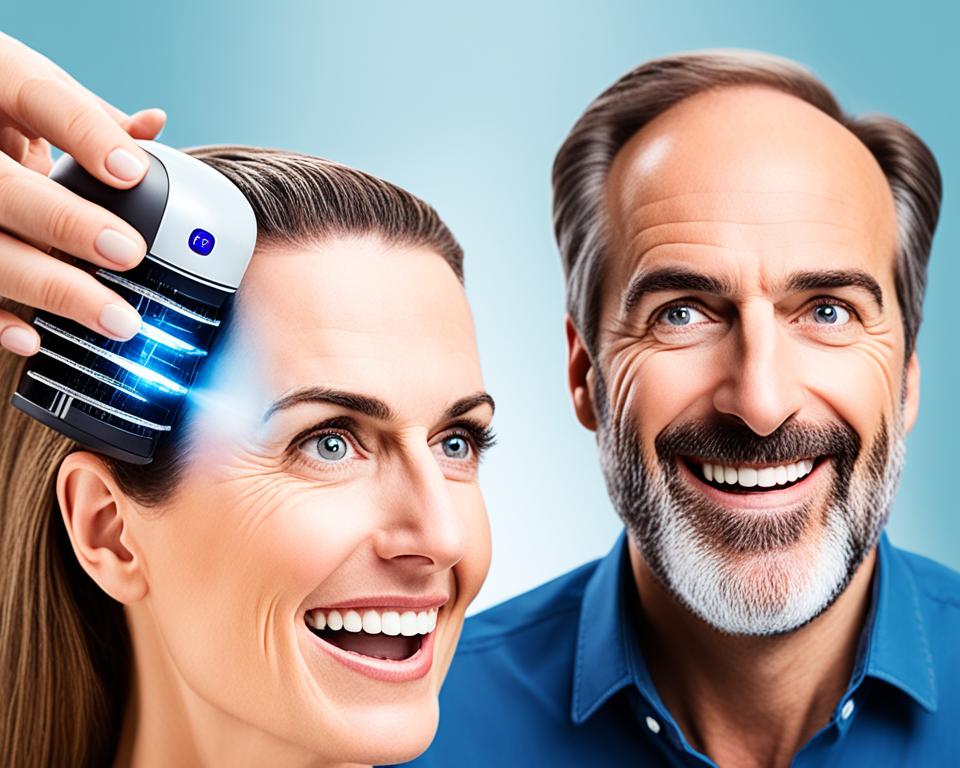
Side effects are rare and include acne, dryness, headaches, and itchiness. It’s great for those with dandruff or an itchy scalp. It’s safe, painless, and won’t harm your hair or scalp. LLLT devices last about four years and are a good investment for long-term use. Even though they cost between £200 and £1,500, many find them effective with regular use.
Scientific Evidence Supporting Low Laser Hair Therapy
Low Laser Hair Therapy (LLLT) is getting attention for its promising results in hair growth. How often you use it, whether you’re a man or a woman, and if you have scalp issues like dandruff affect its success.
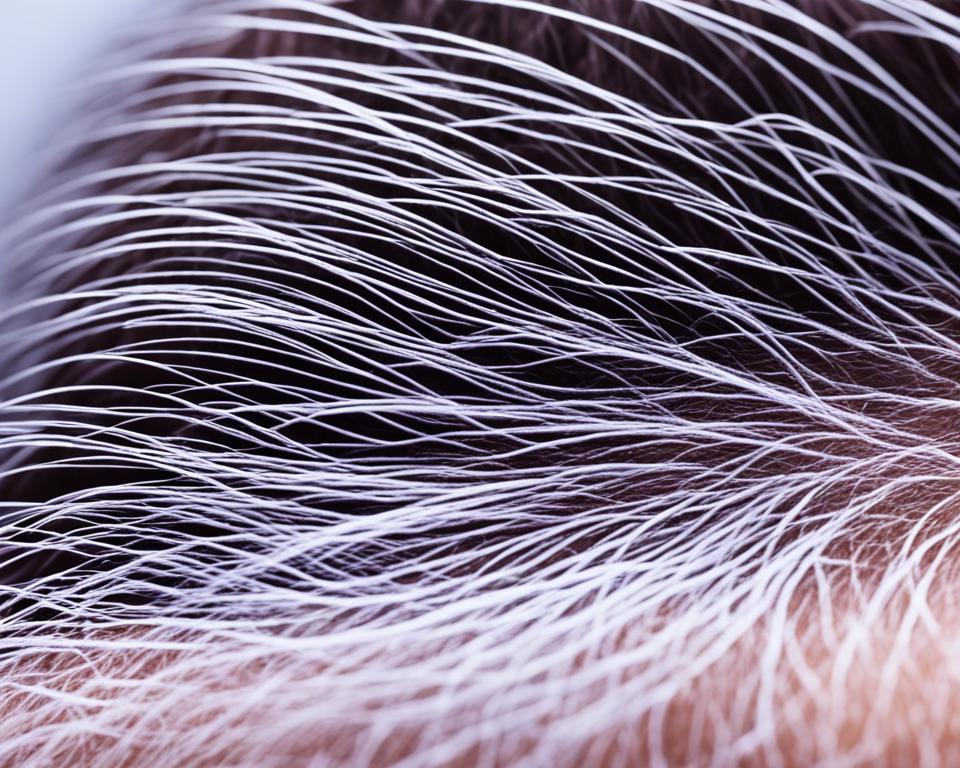
Encouraging Studies and Results
Studies show LLLT can help hair grow. For people with androgenetic alopecia (AGA), the results were good. For example, 51.9% of those with mild AGA and 57.4% with more severe AGA saw moderate improvement. About 27.7% with mild AGA and 20.0% with severe AGA saw big improvements.
Men seemed to get better results, with a 1.35 times higher success rate. Those with scalp issues like dandruff or itchiness also did better, with a 1.34 to 1.51 times higher success rate. Longer treatments, over 180 sessions, also led to better results, with a 1.40 times higher success rate.
Comparison with Other Hair Treatments
LLLT is unique for being non-invasive and showing strong hair growth research. Studies have shown it’s more effective than placebos. For instance, Satino et al. found hair density increased significantly after 6 months.
Large studies by Leavitt et al. and Jimenez et al. also showed good results. Participants saw more hair density and growth. A 2017 study by Dr. Adil and Dr. Godwin found LLLT better than minoxidil and finasteride for treating alopecia. This makes LLLT a top choice in hair therapy comparisons.
| Study | Sample Size | Result |
|---|---|---|
| Leavitt et al. (2009) | Randomized Trials | Improved hair density and growth |
| Jimenez et al. (2014) | Various laser hair comb configurations | Significant increase in terminal hair density |
| Meta-analysis by Dr. Adil and Dr. Godwin (2017) | 7 Trials | LLLT more effective than minoxidil and finasteride |
These findings support the growing evidence for LLLT in hair growth research.
How to Choose the Right Low Laser Hair Therapy Device
Choosing the right LLLT device is key. It depends on your needs, budget, and lifestyle. You have two main options: laser caps and combs.
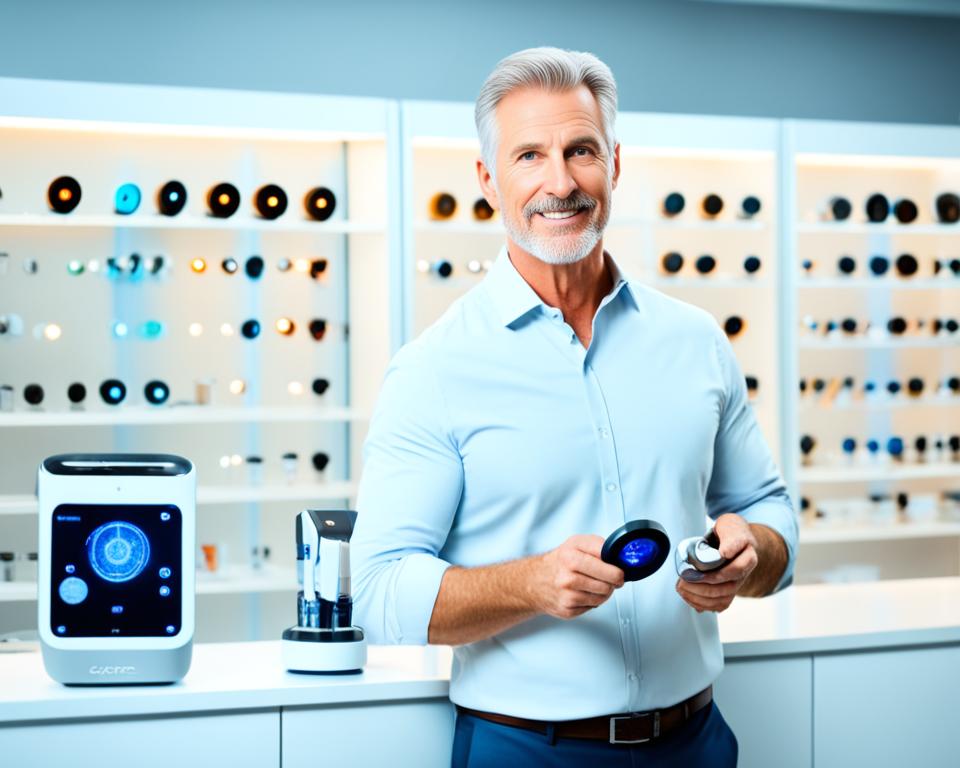
Laser Caps and Combs
Laser hair growth caps, like the LaserCap, have about 224 laser diodes. They cover your scalp easily. They’re great for treating hair loss on the crown and front.
These devices are easy to use because you don’t have to move them. They cost between $700 and $3,000. The more expensive ones have rechargeable batteries and give more energy.
Laser therapy hair combs are cheaper but need moving every 20 minutes. They’re good for targeting specific areas like the temples. They’re a good choice for people with telogen effluvium.
Look at the device’s wavelength, which should be between 630 to 670 nanometers for best results. Make sure it’s FDA-approved for safety and effectiveness. Clinical studies can help you choose the right device.
According to which laser hair therapy is best, caps are convenient and cover more area. But, think about the cost and benefits. Dermatologists like Dr. Daveluy suggest starting with cheaper options like minoxidil or finasteride before trying LLLT.
Both laser caps and combs have their benefits. Dr. Green suggests using red light therapy as part of a full hair care plan. Combining it with other treatments like minoxidil or platelet-rich plasma can improve results.
For more information, check out LOW-LEVEL LASER THERAPY and its benefits.
| Device Type | Laser Diodes | Usage | Convenience | Cost |
|---|---|---|---|---|
| Laser Caps | 224 | Whole Scalp | High – No Repositioning | $700 – $3,000 |
| Laser Combs | Fewer | Specific Areas | Low – Requires Repositioning | More Affordable |
Before using laser therapy or any LLLT device, talk to a dermatologist. They can help you pick the right one for your hair loss and overall hair health.
Professional Low Laser Hair Therapy Treatments
For those looking for a strong solution, professional LLLT treatments are a great choice. These are given by experts and doctors. They offer a detailed plan to fight hair loss. Adding professional LLLT to a hair care plan can lead to better results and more consistent outcomes.
- 100% of subjects saw more hair density.
- With medical laser hair therapy, 97% had more hair by 20% or more.
- 77% had more hair volume by 51% or more.
- Males had 82.8% regrowth in the vertex and 84.6% in the frontal area.
- Females also saw improvements, with 100% stabilization of hair loss in the vertex and 87.5% in the frontal area.
Professional LLLT also boosts blood flow to the scalp by 54% after one session. This leads to shinier, thicker, and healthier hair. 84% of clients saw these benefits in a few treatments.
Targeting specific scalp areas, like the frontal and vertex, has shown great results. Both men and women saw better hair volume, thickness, and growth.
| Percentage | Outcome |
|---|---|
| 100% | Increase in hair density |
| 97% | Hair count increase of 20% or more |
| 77% | Increase in hair volume by 51% or more |
| 84.6% | Regrowth in the frontal region |
| 82.8% | Hair regrowth in the vertex region (males) |
| 100% | Stabilization of hair loss in the vertex region (females) |
People who try medical laser hair therapy see big changes. Many notice more hair growth and thicker hair fibers. Plus, there are no bad side effects, thanks to the natural treatments used.
Professional LLLT at hair clinics is a ray of hope for those fighting hair loss. It brings proven, significant results.
At-Home Low Laser Hair Therapy Options
At-home LLLT devices have made hair restoration easy and convenient. Now, you can treat hair loss from home, skipping many trips to the clinic.
Portable Devices
There are many great at-home LLLT devices out there. The Theradome PRO LH80 has 80 powerful lasers, and the Evo LH40 has 40 lasers. The LH80 needs two 20-minute sessions a week, while the LH40 recommends four sessions for similar results. Both devices treat the whole scalp.
Studies show these devices work well, with up to 80% effectiveness, as the FDA found.
Usage Instructions
For the best results, follow the instructions from the maker. Sessions are about eight minutes long, and daily use can show results in one to two months. Even though it’s a DIY treatment, talking to a healthcare provider can help make it more effective.
Using these devices daily makes them a good choice for fighting hair loss without surgery. It might take three to six months to see the full effect, but being consistent is important for the best results.
Also, using at-home LLLT devices with other treatments like finasteride or hair transplants can make the results even better.
Success Stories of Low Laser Hair Therapy
Many people are now using Low Laser Hair Therapy (LLLT) for hair regrowth. This non-invasive treatment has helped people grow their hair and boost their confidence.
Customer Testimonials
Real people share their stories of success with LLLT. They talk about how laser treatments have worked for them. Many say they’ve seen more hair growth, stopped losing hair, and are happy with the results.
“I was skeptical at first, but after consistent use of the laser cap, I noticed a substantial reduction in hair shedding within just three months. My hair now feels thicker and healthier.” – James P.
Case Studies
Case studies go deeper than just stories. They show strong proof of LLLT’s success. These studies show how using LLLT devices has led to great hair growth and strength for many.
| Case Study | Duration | Results |
|---|---|---|
| Study 1: Male, Age 35 | 6 Months | Increased hair density by 50% |
| Study 2: Female, Age 42 | 26 Weeks | Reduction in hair loss, noticeable regrowth |
| Study 3: Male, Age 28 | 3 Months | Fuller hair with stronger strands |
LLLT success stories and testimonials show its promise. They give hope to those looking to try it. Remember, being consistent is important, as results can differ. But, the chance of getting fuller and thicker hair is good.
Conclusion
Low-level laser therapy (LLLT) is a non-invasive way to fight hair loss. It uses wavelengths of 790-820 nm to help hair follicles and scalp health. But, it’s important to know it needs a certain power of 510 kW per cm². This might not work for everyone, especially those with darker skin.
Studies, like the one on the RAMACAP laser helmet, show LLLT works well. In a 24-week study with 40 people with hair loss, hair density and diameter got better in the laser group. Some people felt temporary hair loss and scalp itching, but it was rare. The RAMACAP device meets FDA standards and helps both men and women. Its 224 red laser diodes and timed light have shown good results, making it a promising hair growth solution.
In conclusion, LLLT has great potential for hair growth. But, talk to a healthcare provider before starting to make sure it’s right for you. Trying this therapy could be a big step in your hair care journey, offering a scientifically proven way to see results.
Source Links
- Laser Treatment for Hair Loss: Does It Work?
- Role of Low-Level Light Therapy (LLLT) in Androgenetic Alopecia
- Low-level laser treatment can stimulate hair follicles and hair growth, expert finds
- Understanding Hair Loss: Causes and Treatment Options | Hudson Dermatology and Laser Surgery
- Treating Hair Loss
- Hair loss – Diagnosis and treatment – Mayo Clinic
- DermNet® – Low dose laser therapy for hair loss
- LLLT: Hype vs. Reality | Ohio Facial Plastics
- Low-Level Laser (Light) Therapy (LLLT) for Treatment of Hair Loss
- Low-Level Light Therapy for Hair Growth and Skin Rejuvenation
- Benefits Low Level Light Therapy | Hair Loss Treatment | Dr. Cappuccino
- Low Level Laser Hair Therapy – American Mane
- Healthsprings Aesthetics (Bidadari/Woodleigh)
- What is Laser Hair Restoration? Costs, Risks, & Benefits – Utah Hair Restoration
- Laser Hair Therapy: What You Need To Know – HairScience
- Baricitinib treatment for alopecia areata | Dr Anastasia Therianou MD, PhD
- Efficacy assessment for low-level laser therapy in the treatment of androgenetic alopecia: a real-world study on 1383 patients – Lasers in Medical Science
- Does Low Level Laser Therapy (LLLT) actually work for hair loss?
- A Systematic Review and Meta-analysis of Randomized Controlled Trials of United States Food and Drug Administration-Approved, Home-use, Low-Level Light/Laser Therapy Devices for Pattern Hair Loss: Device Design and Technology | JCAD | The Journal of Clinical and Aesthetic Dermatology
- Which Laser Hair Therapy Is Right For You? | West LA Hair Restoration
- Red Light Therapy for Hair Growth Is Trending—These Are the Devices Pros Recommend
- Low-Level Laser Therapy (LLLT): The Complete A to Z Guide
- Professional Laser Hair Therapy -Clinically proven 90% Effective
- iRESTORE Laser Hair Growth System | FDA Cleared | Over 25,000 Reviews
- What’s the Cost of Low-Level Laser Therapy? – HairScience
- Low-Level Laser Therapy (LLLT)
- How Laser Hair Therapy Reverses Thinning Hair! Plus the Best at-Home Devices to Use
- Laser Hair Growth Helmet, Cap | Laser Hair Growth Device | Theradome
- Does Laser Hair Therapy Really Work For Hair Loss? – Optima Hair
- The Science Behind Low-Level Laser Therapy (LLLT) for Hair Loss: Why A
- The Benefits of Low Level Light Therapy
- Hair Growth with PBM and Hair Laser Therapy. Let’s talk about it! Let’s talk about it! | SPRINGS Hair Restoration
- Low-level laser therapy for the treatment of androgenetic alopecia in Thai men and women: a 24-week, randomized, double-blind, sham device-controlled trial – Lasers in Medical Science
- Medical Lasers
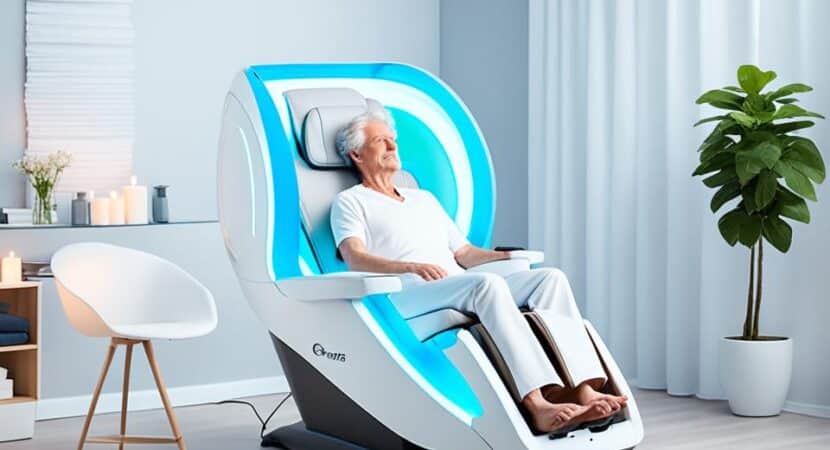

Reply